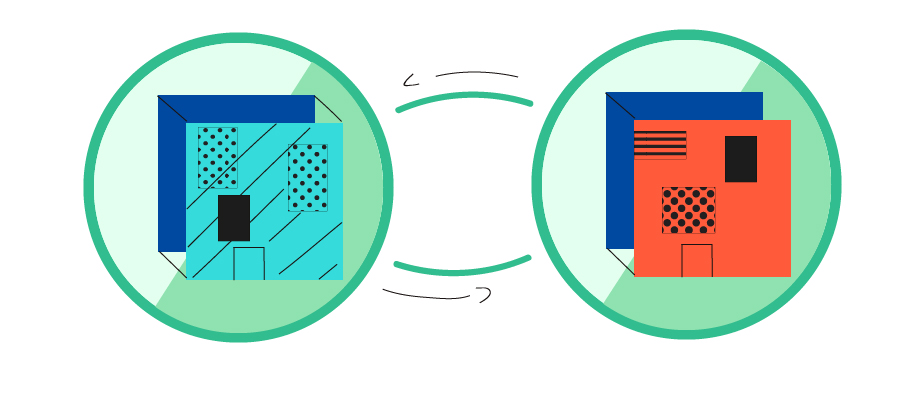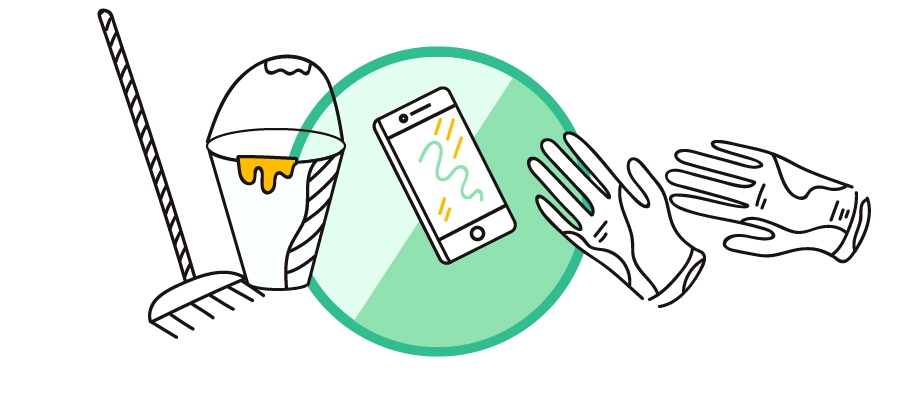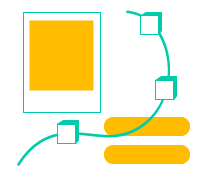Intro
On-demand delivery with Uber being a pioneer of it has changed the game: now applications inspired by the market giant penetrated literally every area of our lives from private transportation to grocery supply and b2b logistics. Although Uber app model seems to be a win-win situation for both software developers and users, it is not enough to just copy the famous feature set to succeed. In this post, we’re diving deeply in the on-demand delivery app development to find out what does it take to create a mobile application similar to UberRUSH or Shyp that won’t shut down.
Types of On-Demand Applications
Long before starting the development process, it’s necessary to systematize information we’ve got on the on-demand applications as they are running on the digital market in 2019. From the point of vendor-client relations, we single out the three following types of on-demand service applications:
1. Person-to-person

As it’s probably clear enough from the title, in the person-to-person app people order services from one another without any particular company or business involved. Here, the app acts as a platform that gathers ordering consumers with service providers. Uber is probably the most famous example of P2P on-demand app. Other players on the team are Airbnb, TaskRabbit, Postmate, and Instacart.
2. Enterprise-to-person

For an enterprise to launch its own on-demand app, would it be a service distribution or food delivery, is definitely a smart thing to do. In this case, the company owning the app gets an opportunity to reach a wider audience and increase client loyalty amongst the already existing clients. A great example of E2P application is the on-demand delivery app by Domino’s Pizza. In addition to all the features of a classic pizza delivery application, it has a killing pizza tracker that allows users to track their order preparation in real time.
3. Enterprise-to-enterprise

Although services in the b2b sector are rarely organized by mobile applications, you shouldn’t ignore this type of apps if thinking about an on-demand service app startup. UberRUSH and Shyp are probably the best-known platforms offering same-day voluminous deliveries to merchants. Although these two were taken down by their parenting companies, they gave us an option to learn from somebody’s mistakes instead of making ours. Amongst many other reasons like high contractor turnover and too many unpredictable work conditions, the main reason why UberRUSH failed in our opinion is the unbearably high opportunity cost for a driver comparing to UberEATS or classic Uber car sharing. Taking into account the fact UberRUSH had no exclusivity and relied on the same talent pool as the other two options, it was pretty much designed for failure, unfortunately.
Sectors for On-Demand Apps Development
Regardless of the application type, on-demand services inspired by Uber concept are applicable to a wide variety of economic sectors as shown on the graph:
As we concluded from our own on-demand delivery app development we’re describing below, these three are the most profitable and safe ways to go:
1. Household service providers

Startups that offer users to get their house chores and stuff like repairs done by professional (or at least enthusiastic) people found online are becoming mainstream. The popularity of such applications didn’t come as a surprise since they resolve obvious problems known to literally anyone, and they do that at reasonable prices, usually within a short amount of time. Basically, this sector includes any application that brings together one person who’d like to dedicate a task to another except for the delivery ones, which require a stand-alone classification. Examples of mobile apps working in this sector are getTOD, Handy, and TaskRabbit which provide a wide variety of services to order: these are basically marketplaces that display local labor demand and match it with freelance workers. This on-demand service sector highly relies on the talent pool, which can be quite challenging to attract, so in this case app owners have to set their primary focus on freelancers, not clients.
2. Food & other private goods delivery

This sector is the most popular one in terms of on-demand app development, therefore it has the highest competition rate. However, this doesn’t mean it’s senseless to launch another food delivery app — just add a twist to its feature set (like store-specific exclusivity or flexible loyalty program) and you’re good to go. Apps that are leading the show in this sector are UberEATS, Instacart, Glovo, GrubHub, and DoorDash.
3. Transportation & logistics

On-demand logistics is a very interesting sector, although the most controversial as well. After the two industry-leading applications UberRUSH and Shyp we’ve mentioned above were forced to shut their platforms down, startups felt pretty uncertain about entering that niche. Obviously, transportation services are complex and extremely high-maintenance: everything from the labor pool to movable assets and order tracking has to be carefully managed.
Features to Add in the On-Demand Service App
The essence of any on-demand marketplace is the convenience and ease of use, that’s why the app’s architecture and UI should be the top priorities of the development team when building the application. Must-have features of a good on-demand delivery app include:
- placing orders;
- real-time delivery tracking;
- scheduling delivery;
- push notifications;
- in-app payments;
- orders history;
- quick feedback on couriers (drivers);
- instant chat for consumer-driver communication.
You might be surprised with how short the list is, however, these are just the very core of any on-demand delivery application. There’s still a lot of room left for features that would distinguish your app from the other fish in the sea. But what should there actually be? Obviously, the answer to this question depends on the type of on-demand app a team wants to release, and, especially, the sector the app is going to target to. While an on-demand delivery app for personal shopping has to have a shopping list, wishlist, discounts, and sales alerts, an on-demand transportation application for enterprises has to have a whole inventory tracking tool on board to be convenient.
How To Play It Safe With An On-Demand Delivery App Launch
When working on this post, we were mostly inspired by Uber experience with its UberRUSH application and Shyp shipping company. And yes, we’ve heard about both of them having gone defunct for a number of reasons. Was there a chance to avoid such a failure? After making our research, we think there were plenty of them. Here are our top recommendations and techniques to stick to if you want your on-demand delivery application to survive:

Be humble, start locally.
It’s always better to test the waters first, detect your weak points and fix them when the scale isn’t huge and things are under your control yet. A smaller area is obviously easier to manage, as well the recruitment process for contractors and promotion of the new app launch.

Define your target audience firmly.
You’re probably thinking that the digital product you’ve been working on for so long is a perfect fit for anyone using a smartphone and there’s literally no human being who wouldn’t benefit from downloading it. Well, in reality, no matter how great your app is, you can’t market it to all the Earth population at once. A thorough analysis of the local market is a necessary step on your way to defining a figure representing your target audience.

Encourage loyalty, not demand it.
Consumer trust and loyalty take time to be earned. Set up a referral program for your users, be generous to people who share their positive experience with the app, and be extremely attentive to those who weren’t fully satisfied. Also, be ready to users comparing your app to the market giants, and not always in your favor. Positive brand image and reputation is what matters if you have long-term plans for the digital market.

Be careful what you wish for.
In other words, do not grow until you’re ready. Pursuing strategical growth isn’t equal to a successful launch, and the fact you’re playing on a smaller field doesn’t devalue your product. Once you have polished the service distribution on your initial location, you can start considering operations at a larger scale. Just don’t forget it requires extra budget and more people working for the platform.

Work on what stands behind your app.
Although brand image, high-performing software, and intuitive and eye-catching UI/UX are very important, and the end of the day people are the most valuable resources of any business. The success of an application distributing on-demand delivery hardly depends on how professional are the couriers, how attentive are customer support representatives, as well as all the others working for your brand on any position. Take that into account and always choose talent pool over any other spot for improvement, if any.
Summary
The on-demand economy is the reality of today. Android and iOS mobile applications based on the on-demand service distribution model have proved to be one of the best investment options. Inspired by Uber, Instacart, Amazon same-day delivery, and plenty of other successful launches continue inspiring dozens of people to try their chances on the digital market. We hope this post has shed light on what should be taken into account if one wants to develop a viable on-demand delivery application with a further perspective of turning into a powerful labor marketplace and reliable service. As always, we’d like to hear your opinion on the post and answer any questions on mobile apps development here.



